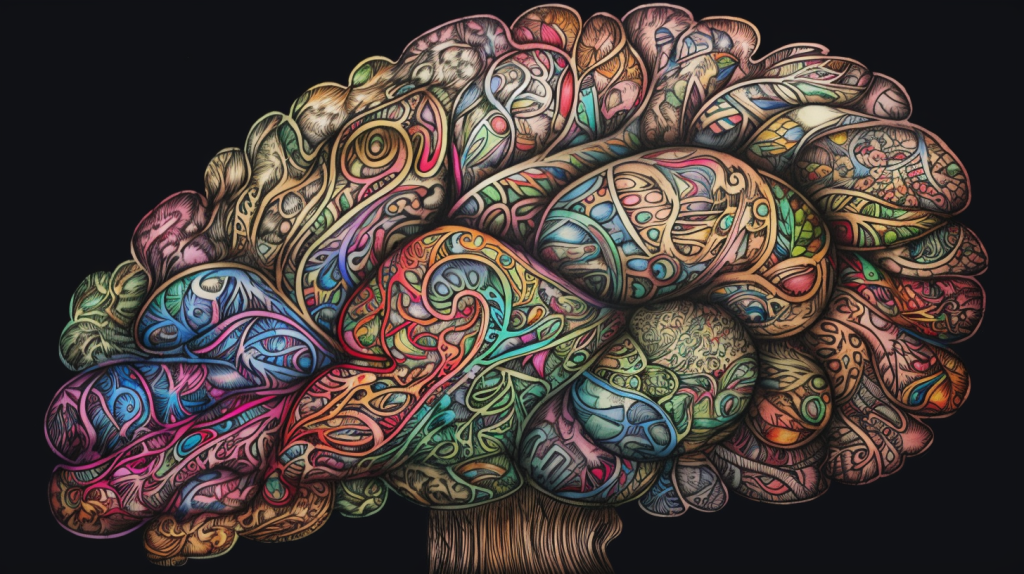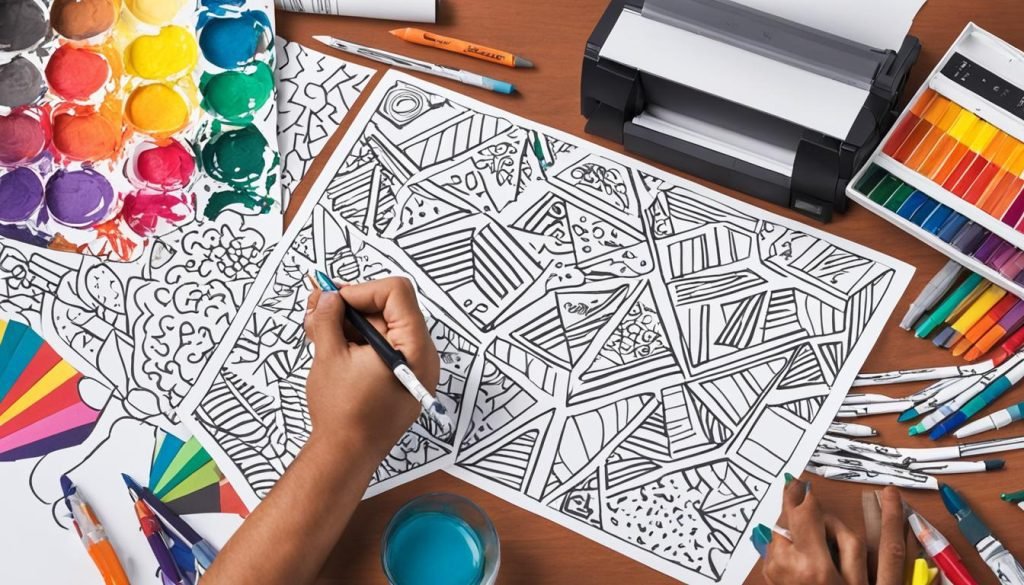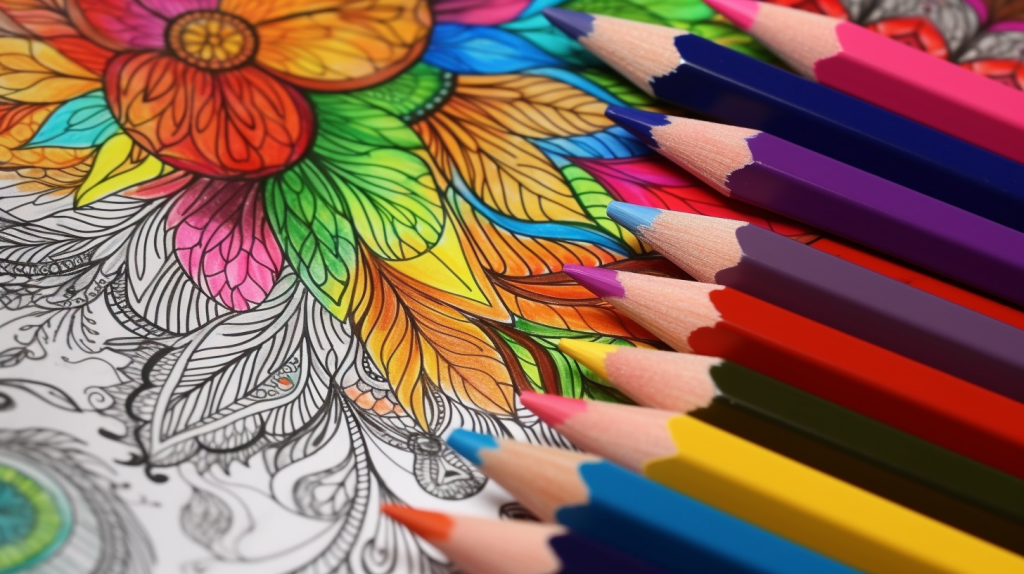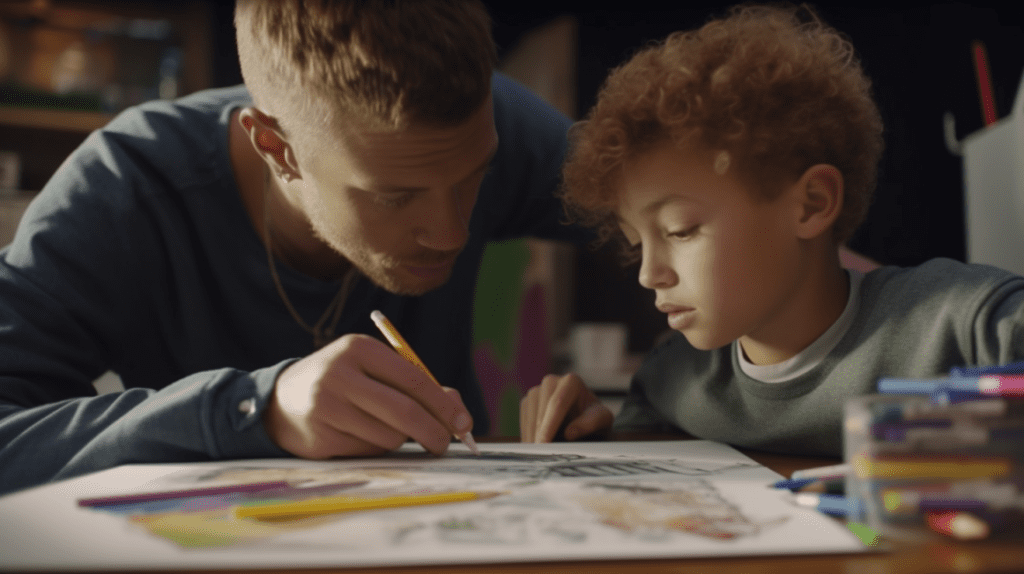Coloring books have been popular for generations as a fun and creative way to pass the time. However, in recent years, the trend has taken on a new level of importance. Research has shown that coloring can have a significant impact on our brains and can even improve our mental health. In this article, we will explore the connection between coloring books and neuroscience and uncover the benefits that coloring can offer.

What is Coloring?
Before we dive into the neuroscience of coloring, it’s important to understand what coloring actually is. Coloring involves using colored pencils, markers, or other coloring tools to fill in designs or images on a page. Coloring books typically have pre-drawn designs or images that are meant to be filled in with color. Coloring can be a relaxing and meditative activity that allows you to focus on the present moment and express your creativity.
How Does Coloring Affect Our Brains?
Coloring has been shown to have a number of positive effects on our brains. One of the most significant is its ability to reduce stress and anxiety. When we color, our brains enter a state of mindfulness, which can help to calm our thoughts and reduce feelings of anxiety.
The Science Behind Coloring and Mindfulness
Mindfulness is a state of being in which you are fully present and engaged in the current moment. It has been shown to have a number of positive effects on mental health, including reducing stress and anxiety. Coloring can be a way to achieve a state of mindfulness because it requires focus and concentration. When you are coloring, you are fully engaged in the activity, and your mind is not wandering. This can help to reduce feelings of stress and anxiety.
Coloring and Neural Connections
Coloring can also have a positive impact on neural connections in the brain. When we color, we are using both hemispheres of our brains. The left hemisphere is responsible for logical thinking, while the right hemisphere is responsible for creativity and intuition. By engaging both hemispheres of our brains, we can strengthen the connections between them. This can improve our overall cognitive function and even improve our memory.
Coloring and Creativity
Coloring is a creative activity that allows us to express ourselves in a unique way. When we color, we are making choices about color and design, which can help to stimulate our creativity. This can have a positive impact on our mental health, as creativity has been shown to be a powerful tool for reducing stress and improving mood.
Coloring and Concentration
Coloring requires focus and concentration, which can help to improve our ability to concentrate on other tasks. This can be particularly helpful for people who struggle with ADHD or other attention disorders. By practicing concentration through coloring, we can improve our ability to focus on other tasks, such as work or school.
Coloring and Memory
Coloring can also have a positive impact on our memory. When we color, we are engaging both our short-term and long-term memory. We need to remember the colors we have used so far and which colors we want to use next. This can help to strengthen our memory and improve our overall cognitive function.
Coloring and Self-Expression
Coloring is a form of self-expression that allows us to explore our thoughts and feelings in a safe and non-judgmental way. By coloring, we can express ourselves in a way that feels comfortable and natural. This can be particularly helpful for people who struggle with expressing themselves verbally or who have difficulty with social interaction.
Coloring and Positive Psychology
Positive psychology is a branch of psychology that focuses on the positive aspects of human experience, such as happiness, well-being, and personal growth. Coloring has been shown to have a number of positive effects on mental health that are in line with the principles of positive psychology. By engaging in coloring, we can improve our mood, reduce stress and anxiety, and foster a sense of well-being. This can be particularly beneficial for people who are struggling with mental health issues or who are going through a difficult time in their lives.
Coloring and Age
Coloring is not just for kids. In fact, many adults are turning to coloring books as a way to reduce stress and anxiety and improve their mental health. Coloring can be a fun and relaxing activity for people of all ages, and it can be particularly beneficial for older adults who may be looking for ways to keep their minds active and engaged.
Conclusion
Coloring books have been around for generations, but their importance has only recently been recognized by scientists and researchers. The connection between coloring and neuroscience is clear: coloring can have a positive impact on our brains and mental health. By engaging in coloring, we can reduce stress and anxiety, improve our cognitive function, and foster a sense of creativity and self-expression. So next time you’re feeling stressed or overwhelmed, pick up a coloring book and see for yourself the benefits that coloring can offer.
FAQs about Coloring and Neuroscience
What are the benefits of coloring for mental health?
Coloring has been shown to have numerous benefits for mental health, such as reducing stress and anxiety, improving focus and concentration, and promoting relaxation and mindfulness.
What is the neuroscience behind the benefits of coloring?
Coloring can activate different regions of the brain, such as the prefrontal cortex and amygdala, leading to increased focus, reduced anxiety, and enhanced mood. It can also increase the production of dopamine, a neurotransmitter associated with pleasure and reward.
Can coloring books be used as a therapeutic tool?
Yes, coloring books can be used as a therapeutic tool in art therapy and other forms of therapy. They can help individuals express their emotions, reduce stress and anxiety, and increase feelings of well-being and relaxation.
Are there any age restrictions for coloring?
There are no age restrictions for coloring. People of all ages can enjoy the benefits of coloring, from young children to seniors.
What are some tips for using coloring as a tool for mindfulness?
Some tips for using coloring as a tool for mindfulness include focusing on the present moment, paying attention to your breath and bodily sensations, and letting go of judgment and expectations. You can also try using colors that reflect your mood or emotions, or experiment with different coloring techniques and patterns.






